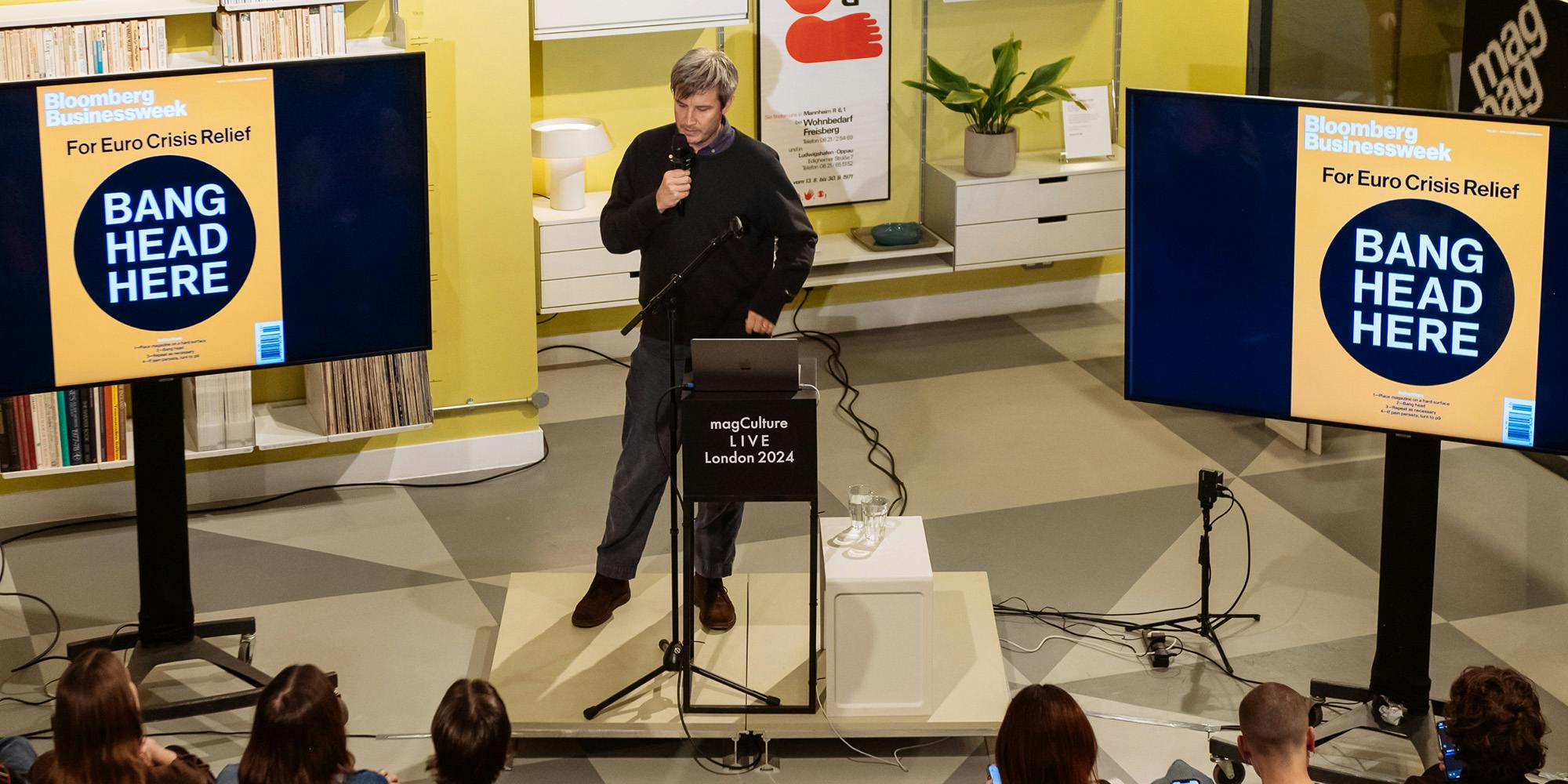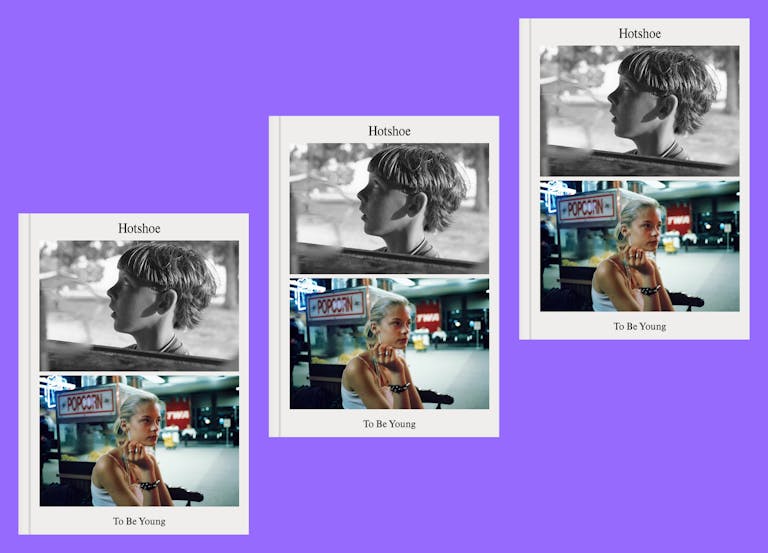Hope and independent publishing
I sat down to write this one day after I attended Magculture Live in London, and three days after a majority of Americans voted for the wrong person to be their president. The event was great – an interesting collection of independent publishers coming together to share their insights with a warm, appreciative audience of print lovers. Ordinarily that would have been enough to keep everyone happy, but in the last week it has been impossible to think about pretty much anything without bending it through the prism of Donald Trump, so I’m sure I wasn’t the only one left pondering bigger thoughts.
A succession of speakers took the stage to describe the passion and dedication that they pour into their magazines, and several made direct reference to the president-elect. In the moment those mentions were depressing, inducing a sense of powerlessness and general dread about the injustices that are no doubt on their way. But standing outside the pub later on, talking about what we’d seen, I realised I was feeling better than I had since I woke up to the news that Trump was likely to win.
That’s probably because I was drinking beer with nice people, but it’s also because the day had reminded me of the essential hopefulness and joy of independent publishing; the refusal to accept received wisdom, and the determination to look beyond the world as seen by the mainstream media. Clearly Donald Tump can’t be ignored, but there are many other things that also deserve our attention, and independent magazines will show them to anyone who cares to look.

The first speaker was Shira Inbar, designer for troublemaking art collective MSCHF and movie company A24. Opening her presentation she showed a looping video of New York, shot from the window of the train she takes into the city each day. She seemed visibly moved by the image – the skyline was presumably the same one she’s seen many times before, but maybe the shadows looked a little darker knowing that her home would soon be under new management.
The title of her talk was, ‘And, not or: Making magazines that live in between’, and she described her work as existing between things. MSCHF itself is notoriously difficult to pin down: an art collective that is also a retail brand that is also a group of anarchic pranksters, it operates within the industries that it satirises, undermining structures by becoming part of them. For example they were famously taken to court by Nike for making their Jesus Shoes – pairs of Air Max 97s that had holy water from the River Jordan injected into the soles, and which were sold for thousands of dollars. They were poking fun at the ridiculousness of the fashion industry, while also participating in the fashion industry.
Similarly, A24 makes for an unconventional publisher – a film and television company, it produces limited edition zines for its new releases, and Shira showed how they explore ideas or characters to take the reader deeper into the production. “The aim is to capture the spirit of the movie without being too on the nose,” she explained, “and above all to reflect the world beyond the movie”.
As she spoke, it occurred to me that magazines are a particularly suitable vehicle for this form of communication: With their headlines, pull quotes, pictures, and boxes, magazines make it easy for readers to fall into a story and be carried along by it. Her magazines, she said, are “like a moving train that travels between these places and connects them”, and I loved her simile of easy travel, transporting readers into worlds they wouldn’t otherwise encounter.

A comparable sentiment was expressed by Lucy Roeber, editor of the Erotic Review, which she relaunched this year as a beautiful, thick, printed magazine. Prior to that, the magazine had begun in print but ended up online, and speaking about her reasons for wanting to go back to print, she talked about the freedom that it brings, giving her and the designers the ability to control every facet of the way each page appears. That freedom, she said, makes it easier to create an original discourse around desire; one that’s not dominated by the prevailing perspectives of male heterosexuality.
She used the magazine’s custom typography as an example; a strange, curvy set of letters and characters called Give and Take, it’s neither male nor female, but it’s somehow sexual, with its lumps and bumps and holes and protuberances. Apparently Spotify declined the opportunity to advertise in the magazine, saying that the ‘E’ of its masthead looked too much like female anatomy. But while this fleshy exuberance may be limiting the magazine’s potential advertisers, I bet it’s greatly enhancing the connection with the reader, and encouraging them to think afresh about what desire means.

Similarly, when the team at It’s Freezing in LA! decided to publish in print, they did so because they were trying to solve a particular problem. Creative director Nina Carter represented it as a Venn diagram of activism and science, explaining that the aim was to take rigorous scientific evidence of climate change, and turn it into clear, persuasive editorial that could spur readers into action.
The magazine has used illustration and data visualisation from the start, but Nina showed how it has evolved over the years, taking advantage of collaborations along the way and developing to present a more considered, more inclusive voice commenting on the climate crisis. Again, the key to it all was human connection, creating an object that gently encourages the reader to think again about something they probably think they already know.

Independent magazines tend to be particularly good at representing voices from the fringes, but when Richard Turley took the stage as the last of the day’s speakers, he provided the proof that the same ideas and approaches can also cross over into the mainstream. Like listening to the new album from The Cure, he said, looking back on his career so far reminds him that you never really change from what you are – “you just keep going on about the same old things”.
In his case that has meant working for huge publications like the Guardian, Bloomberg Businessweek, Interview and Rolling Stone, as well as other organisations like MTV and Wieden + Kennedy, plus independent projects like Good Trouble, Offal, Civilization, and Nuts. He’s a creative powerhouse with ideas coming out of his ears, but he also insisted that the secret of his success is less about some singular genius, and more about keeping busy. He said that virtually all his work is collaborative, and he just keeps on making things, with one project spilling over into another and one set of ideas influencing another. He believes that he would never have been asked to art direct Interview if he hadn’t already been making Civilization, and he showed how one personal project to cover New York in stickers of his own face fed into a poetic campaign for Mulberry.
Summing up, he declared that, “The only thing I really want to do is make printed objects,” but he added an important distinction in the different types of work he does. Because whereas a commercial project has a specific end point, when the logo is delivered or the campaign runs, independent publishing is much less likely to reach a conclusion. “None of these projects are ever finished,” he said. “They just roll on…”
And that goes to the heart of what I love about independent magazines: They exist because somebody has something they want to say, so as long as there are still people who care passionately about communicating their ideas, there will still be the potential for independent publishing to flame into life. A magazine might enjoy a period of popularity before fading away, as happened with the Erotic Review, but there will always be the potential for a new publisher to breathe life into it, and animate it with their particular view of the world.
During her talk, Nina noted that the title of It’s Freezing in LA! was inspired by a 2013 tweet by Donald Trump, a famous piece of climate denial that encapsulated the misinformation and misunderstanding they wanted to combat when they launched the magazine in 2018. She said that in the years since, they had talked about changing the name of the magazine; afterall, Trump was no longer president and they didn’t want to keep invoking his, “bad juju”. It might have been the most depressing Trump mention of the day – a reminder that we thought he had gone away, but now we’re all on our way back to the bad old days.
Except of course the reason why they didn’t change the name is that the world doesn’t hinge on the actions of one man. They had built It’s Freezing in LA! into a potent rallying cry, and even if the man who wrote the initial tweet wasn’t president any more, there was still plenty of misinformation and misunderstanding to fight against. I expect there will be plenty more of that in the coming years, and Nina and her team will redouble their efforts accordingly, but even if Kamala Harris had won last week, I’m sure they would have done the same. They wouldn’t have packed up and gone home just because power had transferred to another Democrat.
The mainstream media has taken lots of shots at Donald Trump, and of course we’re going to need the big news organisations to keep on holding him and his administration to account. But of course none of those attempts has delivered the killer blow – no amount of wrongdoing has been enough to take his power away. And again, this is bigger than one man. Authoritarian politicians everywhere are likely to be encouraged by his win, raising the question of whether we’re coming to the end of the democratic consensus that has held across the West since the end of the Second World War. If that’s the case, it’s not going to be a matter of proving that Trump, or Meloni, or Orbán, or any of the others have broken the law, or made a mistake. It’s going to mean arguing that their entire view of the world is wrong.
No independent magazine would ever hope to topple Donald Trump with a killer story – that’s just inconceivable. But by bringing a group of publishers together, Jeremy Leslie and the team at Magculture provided a timely reminder of the real power these small magazines wield. Because all the magazines at Magculture Live were the result of many people coming together, pooling their ideas and expertise, and making something that not only describes the world as they see it, but also carries the reader off into that world.
If we’re going to go through a period in which some of our most fundamental values are challenged and renegotiated, I definitely want to have independent magazines contributing to the wider conversation. Whether they’re informing, protesting, entertaining, or just getting on with doing their own weird thing, I’m going to want independents for both instruction and distraction, and a reminder that as Richard said, the job is never done – we just keep rolling on.
Photography by Alex Kurunis







